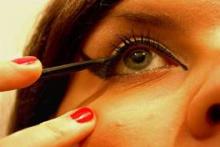Have your patients come in with an allergic reaction or ailment caused by a cosmetic? The Food and Drug Administration continues to implore consumers and providers to report all cases of adverse health affects related to cosmetics. The agency held a webinar on the topic earlier this week.
Legally, the FDA does not have the power to regulate cosmetics before they enter the market However, armed with reports from consumers, the FDA can identify trends and injuries related to specific products. Then, the agency can issue a consumer alert and/or work with other authorities to have a product embargoed, seized, or otherwise kept off the U.S. market. Consumers, medical professionals, and manufacturers can report adverse side effects through FDA's MedWatch program.
In the past, consumers' reports have been the force behind FDA action against production including the Brazilian Blowout hair straightener. In 2007, the FDA used consumer reports to seize more than 12,000 tubes of Age Intervention Eyelash.
Products to watch out for
In their evaluation of trends in consumer reports on cosmetics, the FDA said consumers most commonly report on the following products:
Hair dyes and relaxers: Chemicals in hair products can cause a variety of reactions from hair loss to trouble breathing. See FDA warnings for more information.
Temporary tattoos, permanent makeup, and henna: These can contain some of the same chemicals used in hair products; however, there is greater exposure to the skin. They cause allergic reactions and infection. See FDA warnings for more information.
Eye products: Because of repeated microbial exposure, the FDA recommends only using any particular eye cosmetic for 2-4 months. If you keep the products too long, share it with a friend, or fail to always keep it clean, you can increase your risk for infection.
The FDA is encouraging providers to discuss reporting with their patients. If patients have already reported the event, providers should not submit a duplicate report, the FDA said.
Submitting a report
Providers and consumers who want to report adverse side effects from cosmetic use, the FDA requests that you include the name of the product, name of the manufacturer, and a detailed description of the side effects, dates of purchase, and how the product was used.
Safe-use guidelines
When counseling your patients on the proper use of cosmetics, the FDA recommends the following talking points:
Immediately stop using any products that cause adverse side effects.
Make sure your hands are clean before applying cosmetics.
Keep all cosmetic containers clean.
Follow directions on the product’s intended use.
Store products at room temperature. Products stores in warmer temperatures will expire sooner.
Throw away any old products. As a rule of thumb, don’t keep any cosmetics for more than 1.5-2 years.
--Frances Correa (on Twitter @FMCReporting)


